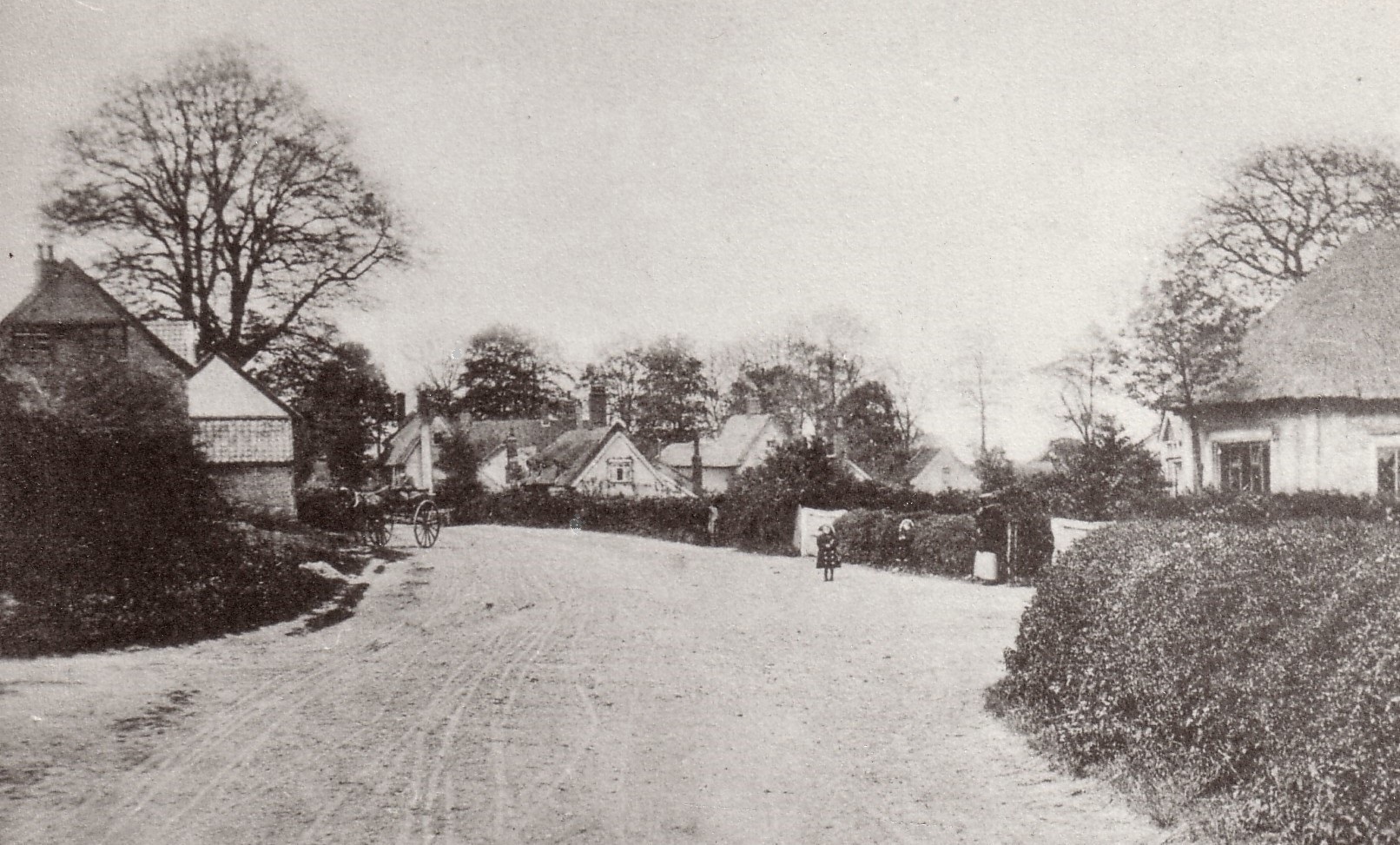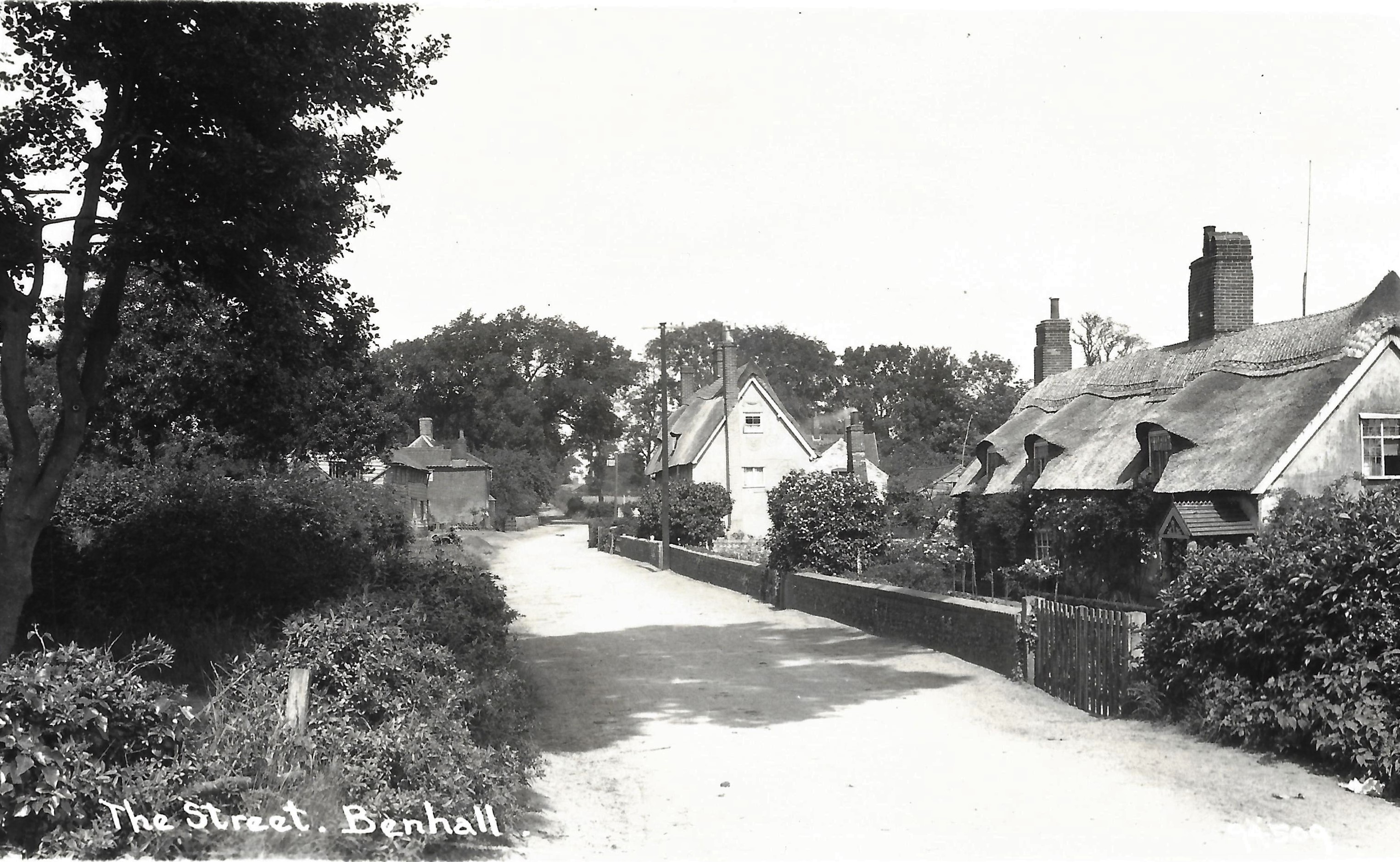- Screen Colours:
- Normal
- Black & Yellow
Luffe’s Mansion, Benhall
When a house comes up for sale it tends to encourage local chat and speculation about who lived there in the past and just such an event happened this year with the sale of Limetree House in Benhall Green.

The date on the side of the house states it was built in 1793 and local residents refer to the property as Limetree House or Limetree Farm. However, before a lime tree was planted in its grounds over 200 years ago, it was once known as Luffe’s Mansion.
In fact, two properties in Benhall Green are known locally as Luffe’s Mansion and oddly they are opposite each other on the same narrow lane. One the imposing Limetree House and the other a small thatched cottage (no. 8 Benhall Green). Why is that?

Henry Luffe was born in 1762 and married Ann Ashford on 2nd August 1787 at All Saints Church, Saxstead, Suffolk.
By April 1792 he was a prosperous gent living in Benhall and advertised in the Ipswich Journal: MESSRS ROBINSON GROOM AND HENRY LUFFE beg leave to inform the Carpenters, Joiners and the public in general that they are engaged in the DEAL and TIMBER TRADE at Aldeburgh and in Benhall. He was described by one newspaper as ‘an opulent farmer and merchant of Benhall.’
In the same month he commissioned a mansion at no. 2 Benhall Green, set in 3 acres of land as seen in the previous sketch. His neighbours were Robinson and Sons, Wheelwrights and Coach makers in Benhall since 1772.
The Mansion had many bedrooms to accommodate 7 four-post and tent bedsteads with fine cotton and mureen hangings, flock and wool mattresses, counterpanes and quilts. He furnished it with Kidderminster and other carpets, mahogany secretary and bookcases, dining and loo tables, painted and cabriole chairs and also with plate, glass, linen, china, mirrors, a yellow dinner service, coffee urns, brewing utensils and corner washstands.

However, by early November 1805 Henry Luffe’s fortunes were about to change as he had been having a liason with a Captain’s wife, a ‘beautiful and modest lady.’ Her husband had been away on the Doebuck Whaler since April 1804 and returned in June 1806 to find his wife heavily pregnant and she didn’t hesitate to name Henry Luffe as the child’s father. She gave birth to a boy in July 1806 and an order of bastardy was immediately issued against Luffe by two magistrates.
In October, Captain and Mrs. Taylor, as well as Henry Luffe and a representative from the parish of Benhall, were ordered to appear at the Woodbridge Sessions. Following 3 - 4 hours of argument and with Mrs. Taylor giving evidence, an order of bastardy was confirmed and a cause of crim.con (criminal conversation) was commenced, the conversation being a euphemism for sexual relations. It meant that Captain Taylor could sue Henry Luffe for compensation, for the breach of fidelity with his wife. Suits for criminal conversation could reach vast sums of money and were conducted at the King’s Bench in Westminster Hall. They were also highly publicised as evidence of adulterous behaviour was given by servants.
In February 1807 Luffe was convicted and his conviction confirmed at the King’s Bench. During the next few years Luffe received an anonymous letter left in his garden threatening to burn his property, his barn was maliciously set on fire and his co-partnership with Lionel Mayhew as joint coal merchants in Snape had been dissolved. By 1817 Luffe was declared bankrupt.
On 1st July 1817 Luffe’s Mansion, its contents, his farm and farming stock had been catalogued and were all up for auction. He also had to sell property in Saxmundham and his business in Snape. So, what happened next to Henry Luffe?
Per 1841 census and Tithe map of 1846 Luffe is living in a small thatched cottage (no. 8 Benhall Green) opposite the Mansion he once owned (see far-right thatched cottage, he is living in the right-hand half of the cottage shown in this image) and he is running a modest timber business.
This is the cottage that today is known as Luffe’s Mansion, demonstrating perhaps a tongue in cheek sense of humour. Henry Luffe died in 1847 and is buried at St. Mary’s church, Benhall.
